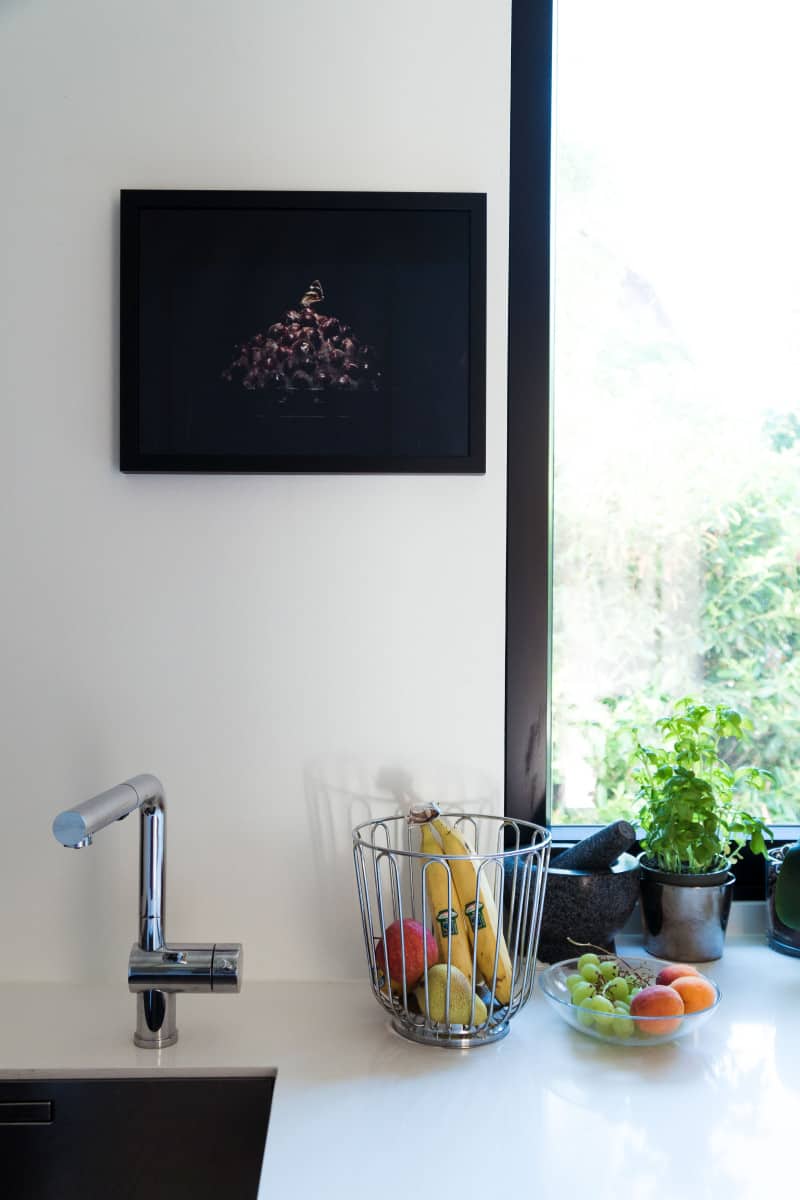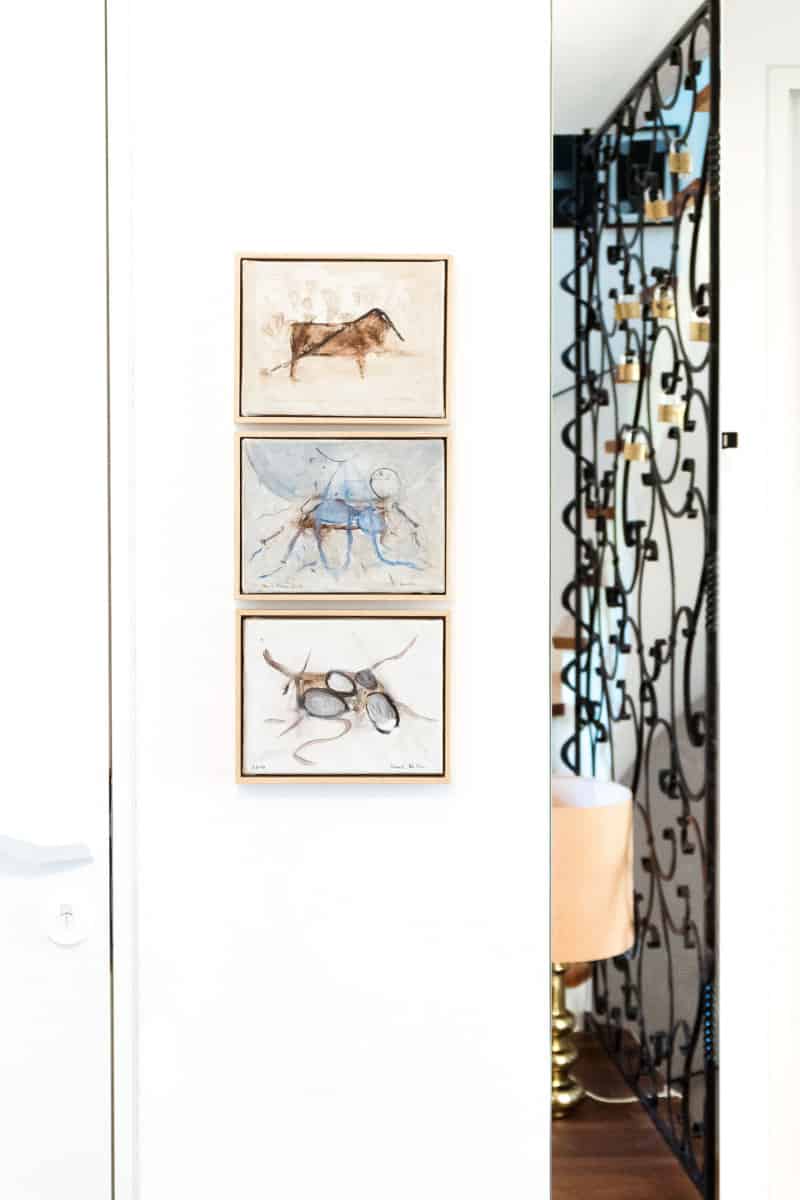Bernhard Moss started buying art when he was a student. Soon after, he met his wife Ruth, who joined him in his passion for contemporary art. I met the couple in their house at Baumgartenhöhe, a picturesque area of Vienna, to find out more about their collection.

Bernhard and Ruth Moss
Kris Kulakova: How did you start collecting art?
Ruth: I married a man who was very interested in art. But already as a kid, I loved going to museums and enjoyed watching artworks… I was very fascinated by pictures – I don’t know why. However, my admiration was always from a distance. When I met Bernhard, who had been into art for a long time already, I realized that art is something I can get involved with — to meet artists, and to have art in our home as well.
Bernhard: I started collecting a long time ago, when I was a student. Other guys bought cars, I bought art.
Kris: Did you have some artist friends back then?
Bernhard: In the beginning, not really, but later I became friends with some. I have been working in the advertising scene all my life, which is strongly influenced by art. Eventually I met people, who were selling art and dealing with it – that’s how I got into collecting.
Kris: Which kind of artists do you collect?
Bernhard: Contemporary artists. The more contemporary – and the more progressive – the better! (laughs). But it depends – there’s also Lawrence Weiner and Arnulf Rainer in my collection.
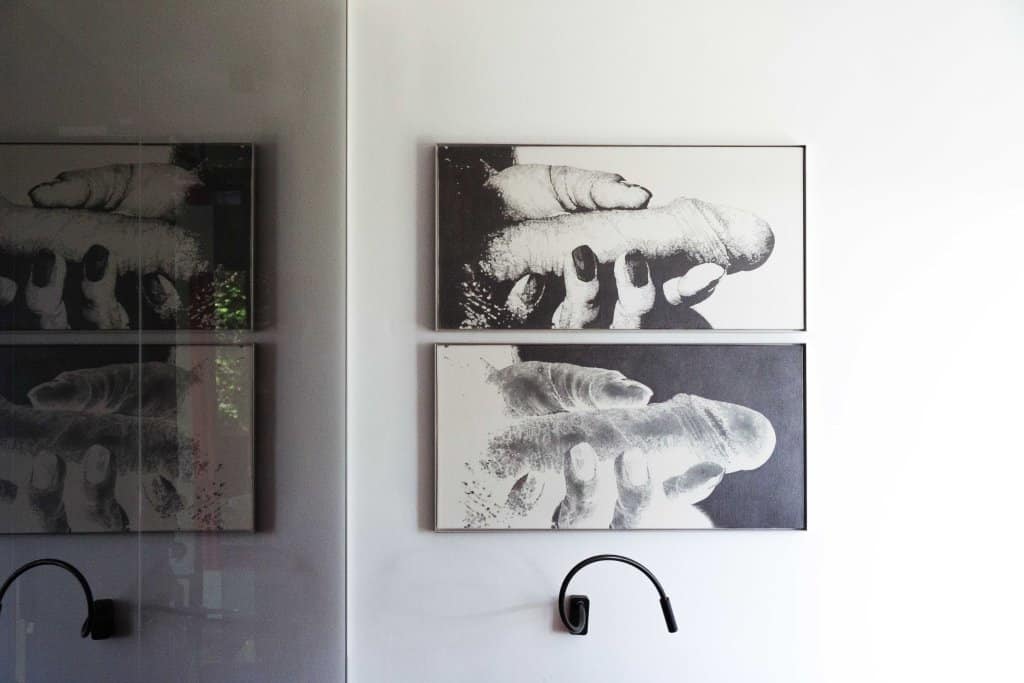
Bernhard and Ruth Moss collection
Kris: Can you name some more?
Bernhard: We have Cécile B. Evans and Birgit Megerle, Nick Oberthaler, the Mahony Collective, Lisa Holzer, Samuel Richardot, Tom Fruin, Markus Krön, Bernd Koller, Sonja Gangl, Andy Boot, …
Kris: Quite a mixture! How many pieces do you have?
Bernhard: I don’t know… 100? 80?
Kris: Do you have a strategy for how to buy?
Bernhard: We just go with the flow…
Ruth: …but we do have a strategy.
Bernhard: We always want to be touched and confronted by the content.
Ruth: And provoked by the art.
Kris: What is the most striking work you have ever purchased?
Bernhard: One we bought directly from the artist – it’s by Sonja Gangl. It’s drawn with a pencil and shows this feminist movie “Tu Vas Bien” with Jane Fonda. It depicts the scene, in which she sticks a penis on his head and tells him to go to his horse. The artist draws this – I don’t know if you are familiar with her work — she always slices these sequences of movies and then replicates them. She transfers it from the digital and back again. She did this artwork as a positive and negative. In our old house, we had it in the living room, but we found it to be too confrontational for people. (They laugh)

Kris: What was the first artwork you bought?
Bernhard: Two works by Bernd Koller, two aquarelles. I still have them.
Ruth: But did we hang them? I think there’s one of them in the kid’s room, but not the first one.
Kris: And how about the last one you bought?
Bernhard: The last one was by Cécile B. Evans – but now it is in Barcelona at the Miró foundation.
Kris: How many of your works do you lend out to museums?
Bernhard: From Birgit Megerle we have this self-portrait, it is on the move all the time. She’s never at home – like a teenager!
Ruth: We miss her! (Laughs)

Bernhard and Ruth Moss collection
Kris: Does she send you postcards?
Ruth: That would be nice!
Bernhard: Catalogues she sends, and invitations for opening dinners – in NY for the Jewish museum. This work of Nick Oberthaler was at a great show at Boijmanss Museum in Rotterdam. Cécile is now in Barcelona and Birgit is always away – she went to KW Berlin, the Jewish museum, and now she’s in Switzerland. It’s in a small Kunstverein, but they did a special show for Birgit.
Kris: It’s nice to hear how you talk about them like they’re your children.
Bernhard: Yes, they are!

Bernhard and Ruth Moss collection
Kris: Did you ever sell something you bought?
Both: No.
Kris: Is this a concept for you, to never sell?
Bernhard: It’s not a concept… But I don’t buy art to sell it again. It’s not a business for us. We do it only for us, not for making money.
Ruth: I think, when you decide for a piece of art, you have a connection with it. It’s something emotional and it’s really hard to give it away again.
Kris: Is it important to you to have a relationship with the artists?
Bernhard: Yes, absolutely.
Ruth: That’s one of the things we really like to do, to invite the artists, to get to know them – also to hang artworks together.
Kris: So do you know all the artists personally?
Bernhard: Not all of them, I think. Lawrence Wiener was really nice, he wrote us an email and we sent him pictures of his works.
Ruth: We met him at a dinner. We know most of the artists, I think. Although, in New York, we only know one.
Bernhard: Tom Fruin? … Daniel Heidkamp? But I only know him from Facebook! (laugh) We’re in contact. His gallery closed during the big crisis in 2008, and so I get the information about his exhibitions now directly from him.
Ruth: Maybe that’s just marketing! (laughs).
Kris: It’s a lesson to the artist.
Bernhard: This is how the art scene worked 10, 15 years ago – you had to drive a Porsche, you had to wear a Tom Ford suit…
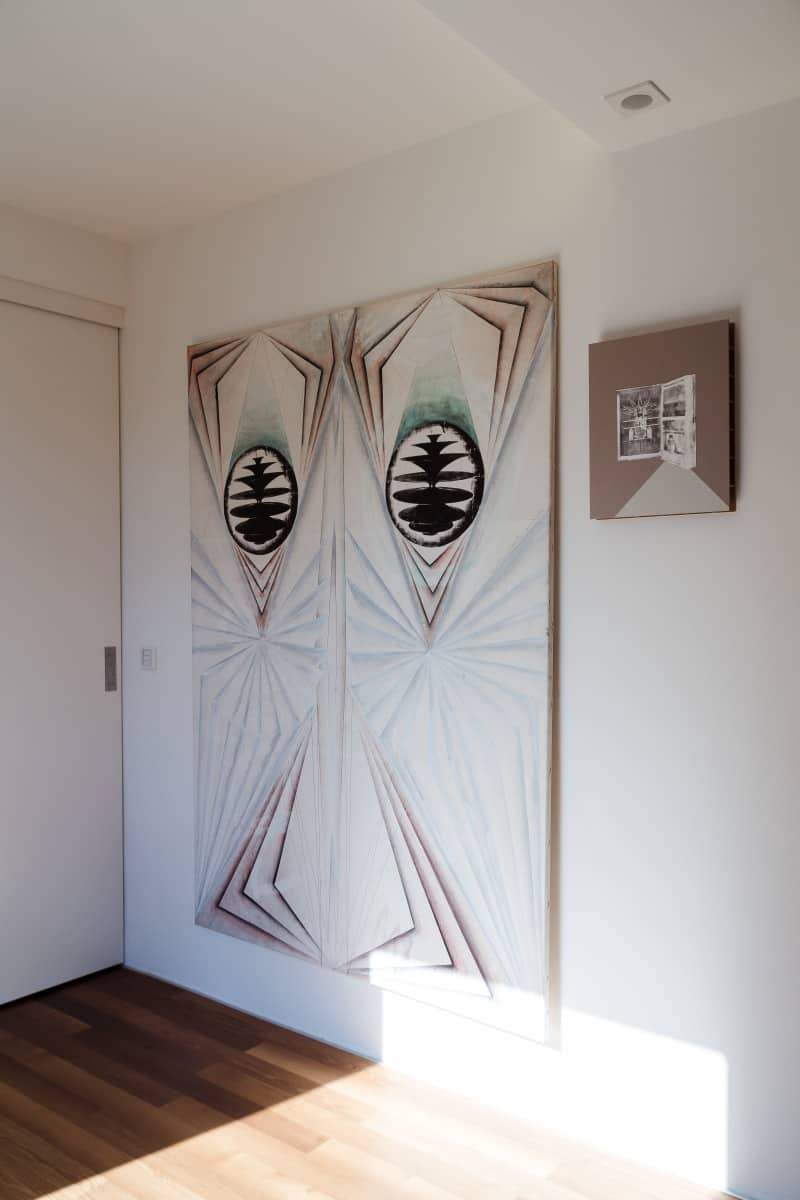
Kris: But that has changed.
Bernhard: Yes, absolutely. You can’t focus on that anymore.
Kris: How about your kids, are they already familiar with art? How do they approach it?
Ruth: They know a lot of artists as well, because they are sometimes our guests.
Bernhard: They are super interested In Lawrence Weiner, ‘cause he’s on Haus des Meeres’– sadly not for that much longer.
Ruth: The younger one, she’s only five years old, pointed at a painting we got from Lawrence and said: ‘This one I want to have in my room!’
Kris: Not bad!
Ruth: Yeah, nice try! Art is really something they are used to. We’ve had it long before we had kids, so they were born into this world. And I think, they love it very much as well.
Bernhard: We have this pink mirror work by Nick Oberthaler. When I brought it into the house, my daughter asked: Is this a mirror or art? I asked her why she wanted to know and she told me that she hated pink. So if it was a mirror, it had to leave, but if it was art, it was okay. (laughs).
Ruth: They are quite interested in different artists, and what their artworks mean. This is something we want to support and give them some kind of feeling for it– so they can have some interest in collecting and will continue.

Bernhard and Ruth Moss collection
Kris: What role does collecting play in your life – is it like a second job, a first job, or just a hobby?
Ruth: An intense hobby.
Bernhard: We’re not at every art fair, because sometimes we have to work and earn money. The first hobby is our business, and the second maybe… well, we like other things too, like good food and holidays.(laughs)
Now here’s a crazy story – you won’t believe it. When I was student, I I already collected and was a big fan of Tom Fruin – his work is the one with the drug-bag pieces and with dealers’ logos from these housing areas in New York City. Once I went to a show in Geneva and wanted to buy one of his works, but he told me ‘it’s expensive, you can’t afford it’. Later, I worked as a teacher and went to NYC with my students. I visited him in his studio and again wanted to buy one – but he only answered ‘it’s really expensive’. When my wife and I got married, as a present we collected money to buy a work by Tom Fruin. Once we had the money, I texted him again, but he didn’t answer. So I found this gallery in New York, Vanessa Buia, and texted her. I asked her to send me pictures of the work, because I already knew it personally. I think it was in August 2008 when we made the deal, and she gave me a big discount. And then the Dollar plummeted, with this Leeman Brothers thing. A bit later, Tom Fruin wrote me two pages, hand-written, that he was sorry for never selling a piece to us. And then the next thing is, Vanessa called me, and I heard in her voice that it was an emergency – they needed money now. So I immediately transferred the money. I met Tom one year later, when he had a show at Galerie Heike Curtze. Turned out that he never got the money from the gallery, because it closed shortly after the deal. Can you imagine this crazy story? How stupid! It would have been the same to him if he had made us a present. Really ironic, because I had asked him so often for his art!

Bernhard and Ruth Moss collection
Kris: What is your typical weekend if you have guests over, what do you show them in Vienna?
Bernhard: The rooftop bar at Hotel Lamée has probably the best view, or the one in Sofitel, – Le Loft, the bar by Pippilotti Rist. It’s nice to go to museums or galleries. 21er Haus is great to go to, if they have a good show – which most of the time they do! (laughs) We often go to Mumok and sometimes to Leopold Museum.
Ruth: It also depends if it’s with or without the kids. With the kids it’s always nice to be up in the Hills, at Steinhofgründe, or to go to a Heuriger a bit outside, in Wienerwald, just to be in the nature.
Bernhard: For galleries, I recommend going to Emanuel Layr for sure, Hubert Winter, and the New Gianni Manhattan.
Ruth: Vin Vin is also really great, we liked his last show of Samuel Richardot..
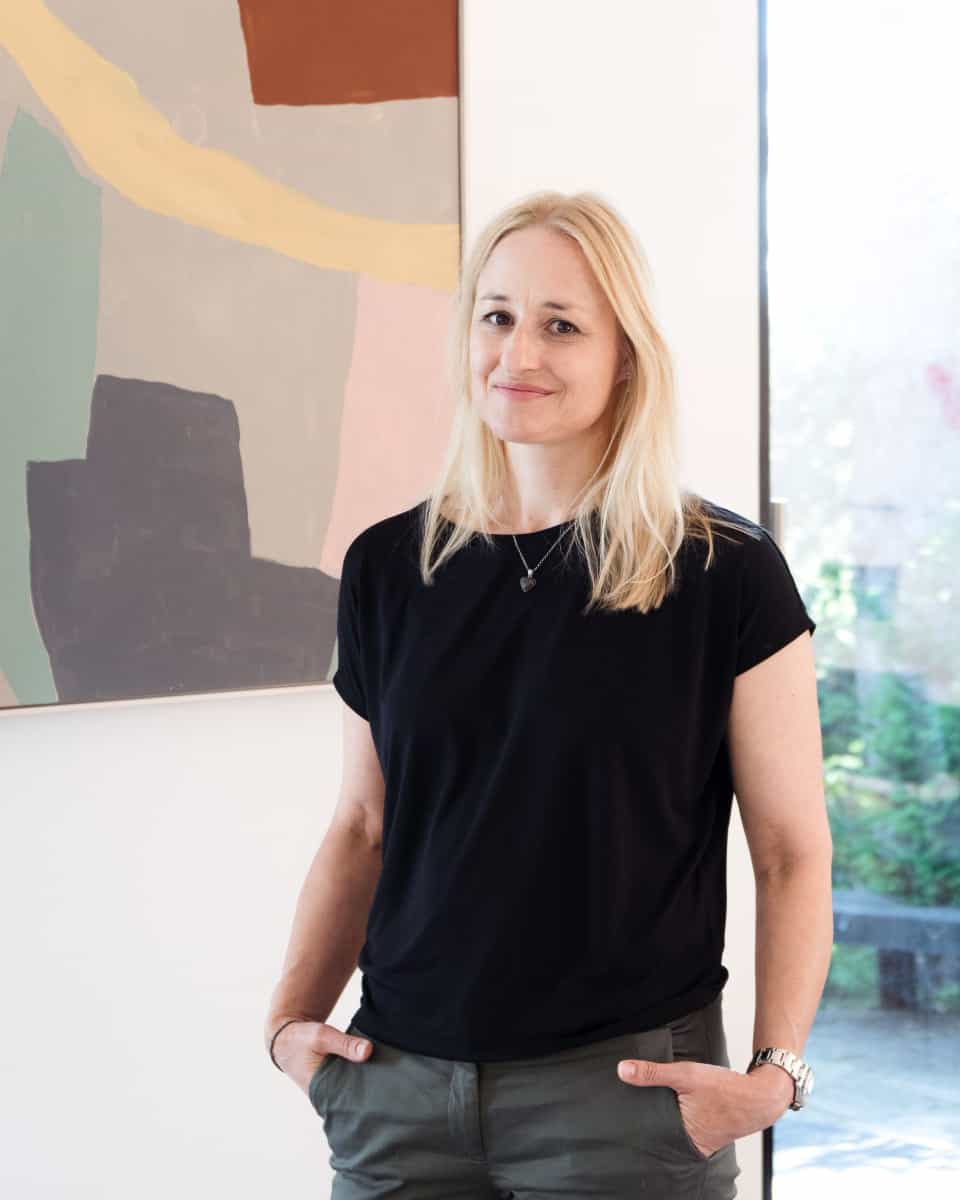
Bernhard and Ruth Moss collection
Kris: Vienna has been named the best city to live in for like 6 years in a row already – why do you think that is?
Ruth: I think, it’s due to that mix we have in Vienna. It’s a safe city – you can go out whenever you want, also at night, you can always walk home by yourself as a woman, and the kids are very safe as well.
Bernhard: You can bring your ideas to life. When you come to Vienna, you don’t need to have money, you can get from zero to a 100 – it’s possible. A lot of people don’t think about this when they think about Vienna. I came here to study and then we started our business. This is also the spirit among young artists in the city now: Everything is possible, and everything goes. It’s possible to do business in Vienna and the government supportsthe people. It’s so amazing – if there’s no bus to cover the 700 meters between Uno-City underground station and the bath “Gänsehäufel”, there will be a free shuttle.
Ruth: All the social services you have – they are quite normal for the Austrians, but I think when you come from another country, you will be very surprised. Another thing I appreciate about Vienna is that you have a very international feeling. You can find internationality if you want to, but at the same time you can have a very local community and local living.. It’s your own choice how you would like to live.
Bernhard: And two thirds of Vienna are filled with woods, greenery and nature…
Written by viennacontemporary
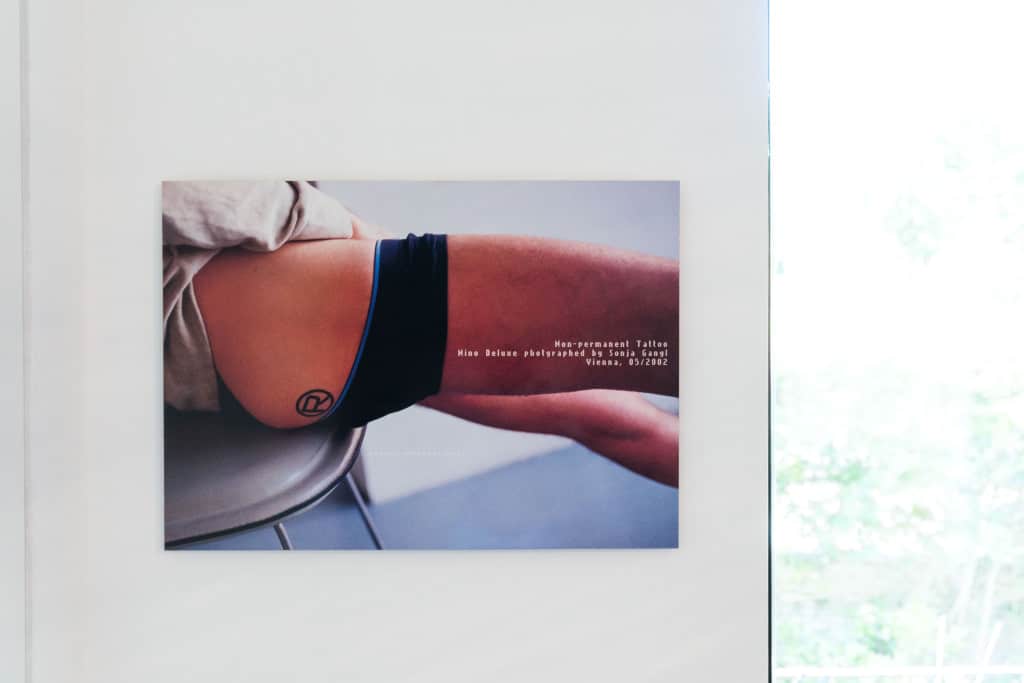
Bernhard and Ruth Moss collection


